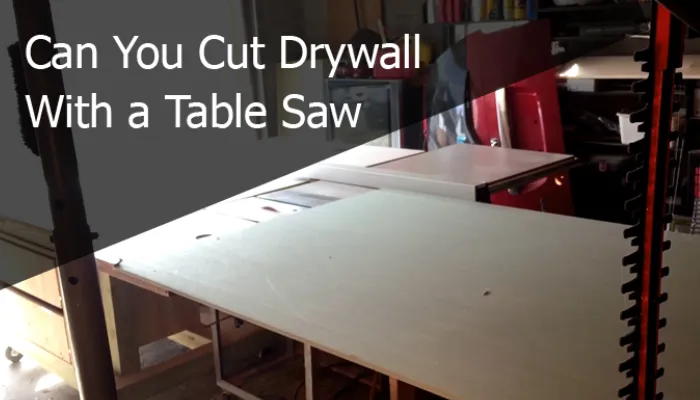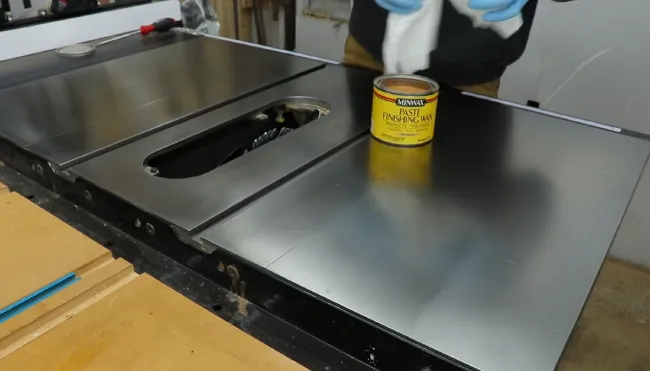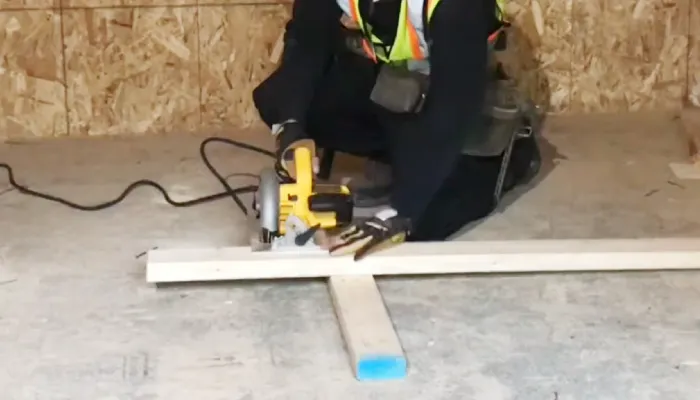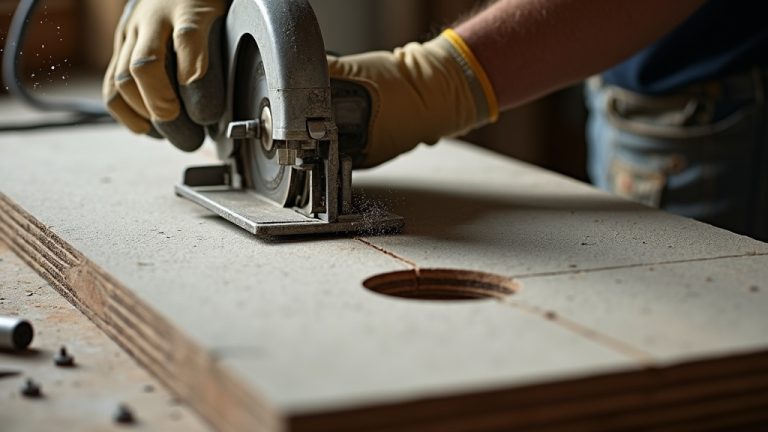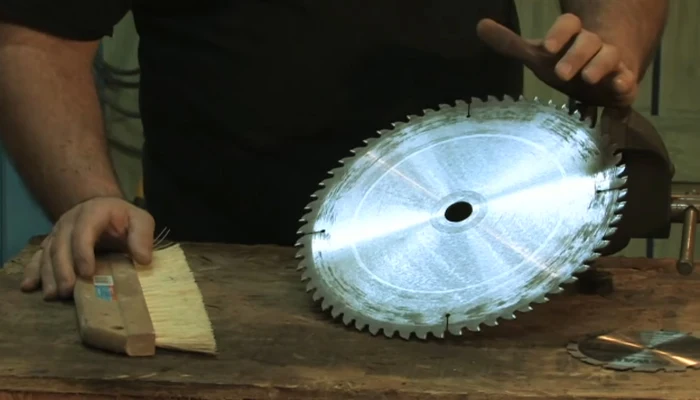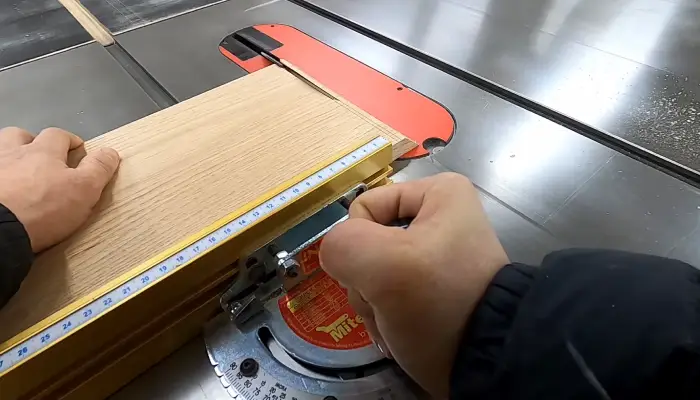Can You Cut Drywall With a Table Saw: 8 Reasons [Negative]
I’ve often wondered if it’s possible to cut drywall with a table saw. Imagine being able to make precise and clean cuts, just like you would for wood.
According to my research, cutting drywall with a table saw is technically possible, but it is not recommended. Table saw blades are designed to produce a lot of dust when rotating at high speeds, so cutting drywall with them may not be clean and accurate.
Moreover, the blade’s power and speed can potentially damage or break the drywall, making it an impractical choice for this task. It is generally better to use specialized tools like a utility knife or a drywall saw for cleaner and safer drywall cutting.
Here, I will share why cutting drywall with a table saw is not recommended and whether circular saws do the job or not.
Why You Should Not Cut Drywall With a Table Saw?
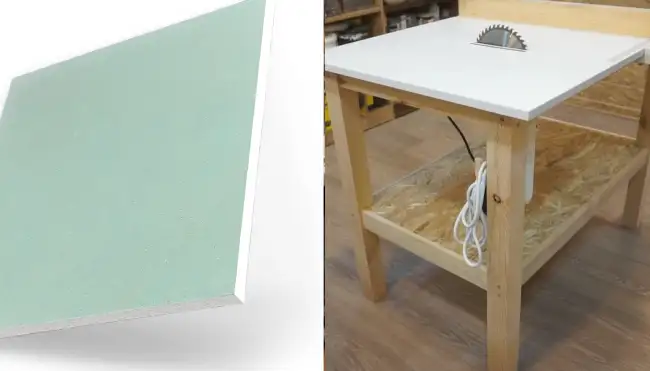
I wouldn’t recommend cutting drywall with a table saw due to several reasons.
- Size limitations
- Unstable material
- Overheating of motor
- Excessive dust generation
- Blunting of the saw blade
- Cumbersome handling
- Risk of kickback
- Lack of precision
No 01: Size Limitations
One major reason to avoid cutting drywall with a table saw is its size limitations. Table saws are typically designed for cutting smaller, more rigid materials and cannot handle the large dimensions of drywall panels.
Drywall panels are commonly available in sheets that measure 4 x 8 feet or larger. Attempting to cut such large sheets on a standard table saw can create unsafe working conditions and increase the risk of injury.
The size of the table and the lack of support can make it difficult to maneuver and control the large and flexible drywall panels. Additionally, the weight of the drywall can put strain on the table saw’s motor, potentially causing it to overheat or malfunction.
No 02: Unstable Material
As I know, drywall is composed of compressed gypsum particles, is fragile and prone to crumbling under the high-speed, rotating blades of a table saw. This not only compromises the quality of the cut but also creates a dangerous situation as the particles break down and become airborne.
The moisture content of drywall also can vary greatly, causing it to swell or curl when cut, again making it difficult to control on a table saw. This can lead to misaligned cuts at best and serious injury in extreme cases.
No 03: Overheating of Motor
The continuous operation of the motor when cutting dense materials like drywall leads to a significant increase in temperature. This excessive heat can produce smoke, affecting its efficiency and overall performance.
Prolonged exposure to high temperatures can cause the motor to overheat, leading to a potential shutdown. This not only disrupts your work but also necessitates costly repairs. I believe the heat generated during the cutting process is simply too much for the motor to handle, making it unsuitable for cutting drywall.
No 04: Excessive Dust Generation
I’ll now discuss the issue of excessive dust generation when cutting drywall with a table saw.
This is a significant concern that arises when using a table saw for drywall cutting. Drywall dust is notorious for its ability to infiltrate various components of the saw, potentially causing damage and reducing the lifespan of the machine.
The copious amounts of dust generated during the cutting process can clog the saw’s motor, impede airflow, and even lead to motor overheating. Additionally, the accumulation of drywall dust can also hinder the saw’s performance and accuracy.
Cleaning up the dust after each cut can be time-consuming and labor-intensive, making the process inefficient. Therefore, it’s highly recommended to avoid cutting drywall with your table saw to minimize the excessive dust generation and potential damage to the machine.
No 05: Blunting of Saw Blade
Cutting drywall with a table saw can quickly blunt the saw blade due to the abrasive nature of the gypsum. The gritty particles of gypsum can wear down the teeth of the blade, reducing its cutting efficiency and accuracy.
This is a concern because a dull blade not only produces subpar cuts but also places additional strain on the motor. If I am not wrong, a blunted blade requires more force to cut through the drywall, increasing the risk of damage and injury.
No 06: Cumbersome Handling
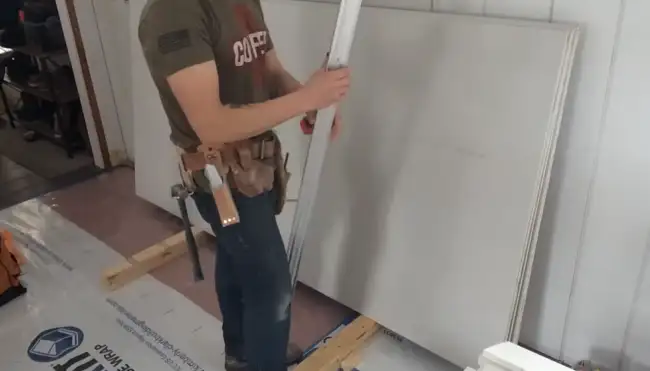
Managing large drywall sheets on a table saw can be a challenging task. The size and weight of these sheets make them difficult to maneuver, and additional support may be required to ensure safety and accuracy.
The sheer dimensions of drywall sheets can make it hard to feed them smoothly through the table saw, leading to potential issues such as misalignment. Moreover, the table saw’s fence may not provide sufficient support for the entire length of the sheet, making it challenging to maintain accurate cuts.
No 07: Risk of Kickback
I found that using a table saw to cut drywall poses a significant risk of kickback. The design of table saw blades isn’t suitable for cutting soft and brittle materials like drywall.
When attempting to cut drywall on a table saw, there’s a high chance that the material can get caught by the blade and forcefully ejected back toward the operator. This poses a serious safety hazard and can result in injuries to the operator.
Additionally, the kickback can cause damage to the drywall, the saw, or the surrounding workspace.
No 08: Lack of Precision
I also believe using a table saw to cut drywall lacks the precision necessary for accurate results. The table saws are designed for cutting hardwood like MDF and aren’t specifically designed for the unique properties of drywall.
Drywall requires intricate cuts, and using a table saw can lead to less accurate results. The large, fast-spinning blade of a table saw can cause the drywall to vibrate and shift during the cutting process, resulting in uneven and imprecise cuts.
Additionally, the table saw’s fence, which is typically used to guide the material, may not provide the level of control needed for precise cuts on drywall.
Can I use a table saw to cut drywall if I have a specialized blade?
With a specialized blade on a table saw, it’s possible to cut drywall. However, there are certain considerations to keep in mind.
Even with a specialized blade, the fine particles generated during the cutting process can be hazardous to your lungs if you inhale dust. It’s crucial to use proper dust collection systems and wear appropriate respiratory protection.
Additionally, the motor of a table saw may not be designed to handle the demands of cutting drywall. Extended use can lead to overheating and potentially cause damage to the motor.
Lastly, drywall can be unstable and prone to shifting during cutting, which can affect the precision of the cuts.
Therefore, while technically possible, using a table saw with a specialized blade for cutting drywall isn’t recommended due to these potential challenges.
What is a good tool to cut drywall?
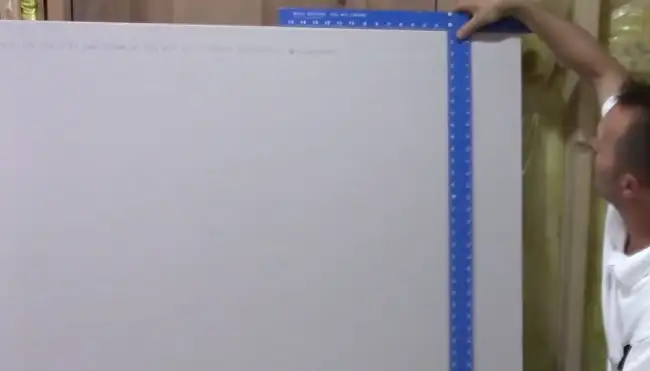
According to my research, a sharp utility knife is a commonly used and effective tool for cutting drywall. It allows for precise scoring and can easily cut through the paper and gypsum core. A drywall saw or rotary tool may also be used for more intricate cuts.
How do professionals cut drywall?
Professionals typically follow the standard method of scoring one side using a sharp utility knife and a T-square. As far as I know, they use specialized drywall saws or rotary tools for more complex cuts. The key is precision and ensuring a clean finish to minimize the need for additional finishing work.
Don’t Expose Your Safety by Cutting Drywall With a Table Saw
In my opinion, it isn’t recommended to cut drywall with a table saw, even if you have a specialized blade. The risk of damaging the drywall or causing injury is high. It’s also not advisable to cut drywall with a circular saw due to similar risks.
It’s best to use a dedicated drywall cutting tool or utility knife for precise and safe results. Keep in mind that utilizing the appropriate tools ensures a successful and professional outcome. So, take the necessary precautions and use the right tools for the job.

